 Shards of Glass by Michelle Sagara
Shards of Glass by Michelle Sagara Format: eARC
Source: supplied by publisher via Edelweiss
Formats available: paperback, ebook, audiobook
Genres: dark academia, epic fantasy, fantasy, urban fantasy
Series: Chronicles of Elantra
Pages: 512
Published by Mira on November 28, 2023
Purchasing Info: Author's Website, Publisher's Website, Amazon, Barnes & Noble, Kobo, Bookshop.org, Better World Books
Goodreads
The Academia, once an elite proving ground for the rulers of the world, has been frozen for centuries. Now its strange slumber has ended, and a new Chancellor, an orange-eyed dragon, has reopened its lecture halls and readied its dorms. In order to thrive once more, however, the Academia needs fresh blood—new students with a passion and talent for learning.
One such student, Robin, has the perfect recruit in his friend Raven, an orphan who lives in the dangerous Warrens. Robin grew up in the Warrens, and he wouldn't have made it if not for Raven. He knows she’ll be safe at the Academia, where her unusual gifts can be appreciated.
But when students start turning up dead, the campus threatens to collapse completely. Raven and Robin will not let that happen to their new home…if they can survive long enough to figure out who—or what—is trying to kill them.
My Review:
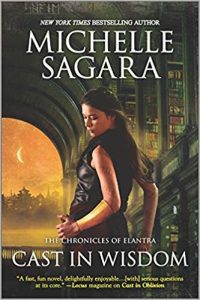 Shards of Glass is a bit of a side story in the marvelously interwoven, intricately-plotted, and long-running Chronicles of Elantra series. It takes us deep into the heart and soul (and yes, it most certainly has one, literally as well as figuratively) of the formerly lost and presumed destroyed Academia, the institution that was found hidden in a misty pocket of Elantra’s fiefs in Cast in Wisdom.
Shards of Glass is a bit of a side story in the marvelously interwoven, intricately-plotted, and long-running Chronicles of Elantra series. It takes us deep into the heart and soul (and yes, it most certainly has one, literally as well as figuratively) of the formerly lost and presumed destroyed Academia, the institution that was found hidden in a misty pocket of Elantra’s fiefs in Cast in Wisdom.
The Academia, both in its function as a school and repository of knowledge, and in the person of its sentient building, majordomo, administrator and caretaker, Killianas, is slowly recovering from its long, well, let’s call it a coma.
But it seems, at least at first, that someone or something or some force or all of the above is trying to prevent or at least delay that recovery. By way of murdering the students. That is not a situation that either the Chancellor, the Dragon Lord Lannagaros, or Killianas himself can allow to continue – not if they’re doing their jobs and/or following the purposes their hearts have called them to.
Which is where Robin, his friend Raven, and the woman they call the ‘grey crow’ wing their way into this considerably disturbed nest of learning and scholarship. Initially, they seem to be a bit at cross-purposes. Giselle, the information broker and ‘grey crow’ of the downtrodden slum known as the Warrens, just wants to get paid for bringing a new student to the Academia. Robin, once a denizen of those Warrens, wants to bring his friend Raven to the Academia, where she’ll be safe and warm and fed and be able to learn more things – just as he is.
But Robin is not safe at all, and neither is the Academia. Since it is Raven’s duty to keep Robin safe, she comes to the Academia to save him. And it. And all of the students who have come to call the place home.
Someone is murdering the students. Or something. Or magic. Or all of the above. No one is sure how they are being killed – or if the students are the intended victims. Or why its happening. Or who might benefit – or think they benefit – from the blood and the chaos.
Raven only cares that Robin is safe. So that he can fulfill a duty he hasn’t been allowed to remember. Which will bring an end to hers – whether her duty ends in success or failure, it will end in blood and tears either way.
Or will it?
 Escape Rating A+: I began reading the Chronicles of Elantra in 2011, at which point the series was already seven books in. I have a distinct memory of where we were living and exactly what the room looked like as I read them – the series made that much of an impression and I was so completely hooked. My first official review of the series here at Reading Reality was for book 7, Cast in Ruin.
Escape Rating A+: I began reading the Chronicles of Elantra in 2011, at which point the series was already seven books in. I have a distinct memory of where we were living and exactly what the room looked like as I read them – the series made that much of an impression and I was so completely hooked. My first official review of the series here at Reading Reality was for book 7, Cast in Ruin.
But, and it is an unfortunately large but in this case, as much as I love the series – and I very much still do – at this point in the main series, last year’s book 17, Cast in Eternity, it’s gotten harder and harder to get into each successive entry as the backstory has gotten bigger, more convoluted and considerably both denser AND more sprawling as it’s gone along. (I have audio for both book 16, Cast in Conflict and Cast in Eternity and have hopes the whole thing will work better for me that way.
But I love the series. I really, really love it. Which is what made both the Wolves of Elantra prequel series (The Emperor’s Wolves and Sword and Shadow), as well as this latest book, Shards of Glass, so good, so much fun, and so much easier to get stuck into.
The Wolves of Elantra is a prequel series, so it can serve as an intro to the Chronicles, but it’s also an excellent way to slip back into Elantra without having to hold all the details of everything in one’s head.
Shards of Glass, on the other hand, is a side story within the Chronicles. It sets a story almost entirely within the formerly lost Academia that was rediscovered in Cast in Wisdom and expands upon that setting and that setting pretty much alone. And it’s a fantasy mystery, which makes it all just that much better, as I love the fantasy mystery blending AND the story is contained enough within the now-mostly-functional Academia that one again does not need to remember all the ins and outs of all of Kaylin Nera’s many, many unexpected ‘adventures’ to happily get ensconced in this one.
Kaylin, the protagonist of the main Chronicles series, isn’t even a side character in Shards of Glass. She’s mentioned – as she should be all things considered – but this is most definitely NOT her story.
Instead, Shards of Glass takes the reader into the heart of that formerly lost Academia, where school is finally back in session after over a millennia of abeyance. The school, both as an institution and in the person of its sentient building and grounds, Killianas, is recovering.
At first, it seems like it’s flailing around its mystery – or at least all the characters within it are flailing, including the Dragon Chancellor and the Giant Spider Librarian. (The varieties of species, histories and perspectives are a huge part of what make the Chronicles of Elantra so much fun. The Dragons are particularly acerbic and wry, but then they can afford to be.)
A big part of the flailing is that there are so many possible motives for the murders and so little ability to settle on which one is correct. The flailing keeps falling apart on, not the classic mystery question of ‘Why benefits?’ but more a matter of who is believed to benefit or who believes they benefit and none of those possible avenues of investigation resolve to the same set of possible motives or suspects.
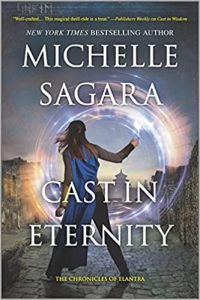 And of course they all turn out to be wrong – and wrong in a way that is buried in the legends of the deep past and will cause catastrophic destruction if they’re not sussed out in time and by the right people.
And of course they all turn out to be wrong – and wrong in a way that is buried in the legends of the deep past and will cause catastrophic destruction if they’re not sussed out in time and by the right people.
So Shards of Glass, both in the way the story works itself and the way it dives deeply into one of Elantra’s fundamental institutions, both fits perfectly into the way the series as a whole works and yet still introduces – or reintroduces – the reader to a small enough corner of the vastness that it’s possible to get completely stuck into the whole thing without remembering all the details of what came before.
On top of all of that, it’s a beautiful story about the power and saving grace of friendship, and that was just wonderful. Shards of Glass is worth the read for that factor alone and I’m so very glad I read it. Hopefully, by the time the next book in the main Chronicles of Elantra series, Cast in Atonement, comes out next August I will have caught back up to that last couple of books in the series that I missed.

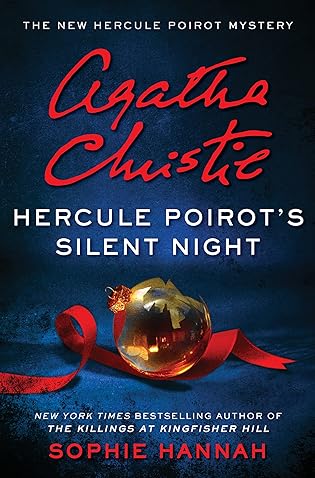 Hercule Poirot's Silent Night (New Hercule Poirot Mysteries, #5) by
Hercule Poirot's Silent Night (New Hercule Poirot Mysteries, #5) by  Scotland Yard Inspector Edward Catchpool and his friend and mentor Hercule Poirot are just settling in to a two-week staycation (even if that term had not been invented yet) in London, staying in Poirot’s rather palatial apartment at Whitehaven Mansions, attended by Poirot’s inestimable butler, George, for the duration of the holidays.
Scotland Yard Inspector Edward Catchpool and his friend and mentor Hercule Poirot are just settling in to a two-week staycation (even if that term had not been invented yet) in London, staying in Poirot’s rather palatial apartment at Whitehaven Mansions, attended by Poirot’s inestimable butler, George, for the duration of the holidays.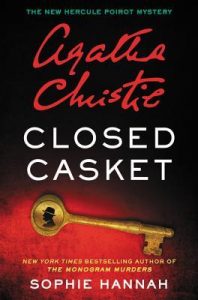 Escape Rating B-: Looking back at my reviews of the previous books in this
Escape Rating B-: Looking back at my reviews of the previous books in this 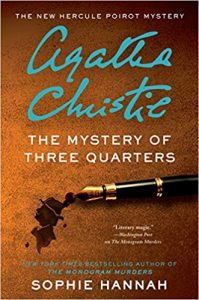 A lot of the ‘action’ of the story, particularly the ‘fair play’ aspects of the mystery and its resolution, were handled as more ‘telling’ than showing, as the two detectives were often working separately, and only caught up at irregular intervals through meticulous reports – which is how the reader gets caught up as well.
A lot of the ‘action’ of the story, particularly the ‘fair play’ aspects of the mystery and its resolution, were handled as more ‘telling’ than showing, as the two detectives were often working separately, and only caught up at irregular intervals through meticulous reports – which is how the reader gets caught up as well.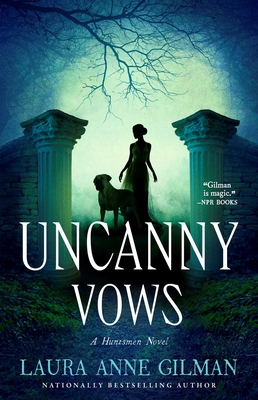 Uncanny Vows (Huntsmen, #2) by
Uncanny Vows (Huntsmen, #2) by 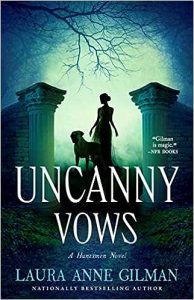 If the idea that the Harker family is somehow involved with the things that go bump in the night feels familiar but you can’t quite remember why, it’s because it IS familiar. Jonathan Harker got himself mixed up with a famous vampire in a little place called Transylvania a mere couple of decades before we first met Aaron and Rosemary Harker in the first book in the
If the idea that the Harker family is somehow involved with the things that go bump in the night feels familiar but you can’t quite remember why, it’s because it IS familiar. Jonathan Harker got himself mixed up with a famous vampire in a little place called Transylvania a mere couple of decades before we first met Aaron and Rosemary Harker in the first book in the 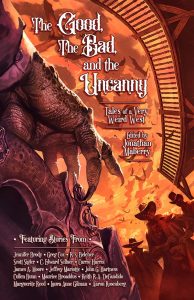 Escape Rating B+: So far, at least, the
Escape Rating B+: So far, at least, the  At the same time, the heavy lifting of setting up the world and the series has already been done in that first book, so this one is able to sink its teeth into the case from the very first page – and that they drive off in Aaron’s rented ‘automotive” gets things going that much faster, while Rosemary’s dislike of the speed, the dust, and Aaron’s relative inexperience driving the thing adds a bit of lightness to what is otherwise a rather dark story of obsession and possession.
At the same time, the heavy lifting of setting up the world and the series has already been done in that first book, so this one is able to sink its teeth into the case from the very first page – and that they drive off in Aaron’s rented ‘automotive” gets things going that much faster, while Rosemary’s dislike of the speed, the dust, and Aaron’s relative inexperience driving the thing adds a bit of lightness to what is otherwise a rather dark story of obsession and possession. Anything With Nothing (Tales of Valdemar #17) by
Anything With Nothing (Tales of Valdemar #17) by  A huge part of the charm of the
A huge part of the charm of the  Escape Rating A-: The previous
Escape Rating A-: The previous  Many of the stories in this collection take place either as magic was fading or after it was already gone. In other words, in the run up to the
Many of the stories in this collection take place either as magic was fading or after it was already gone. In other words, in the run up to the  Last but not least, there are several marvelous stories in this collection that would have been equally at home in
Last but not least, there are several marvelous stories in this collection that would have been equally at home in 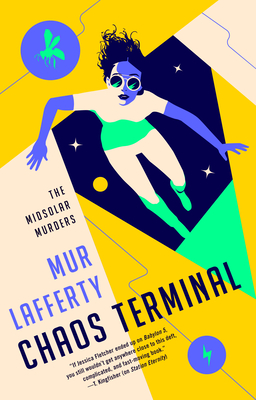 Chaos Terminal (The Midsolar Murders, #2) by
Chaos Terminal (The Midsolar Murders, #2) by  Escape Rating B: One of the things that made the first book in this series,
Escape Rating B: One of the things that made the first book in this series,  The Wishing Bridge by
The Wishing Bridge by 
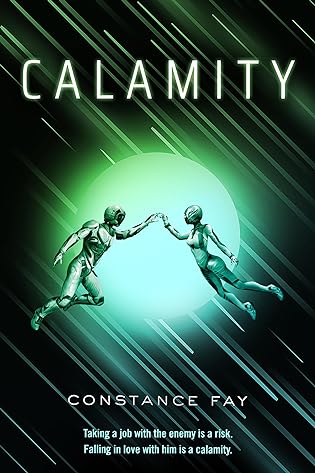 Calamity (Uncharted Hearts, #1) by
Calamity (Uncharted Hearts, #1) by 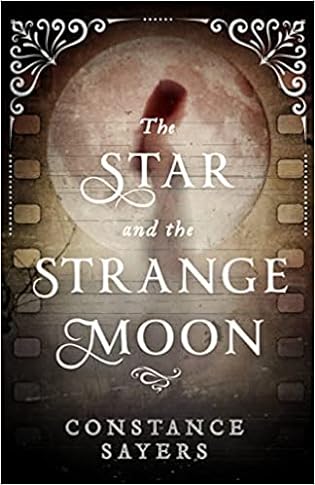 The Star and the Strange Moon by
The Star and the Strange Moon by 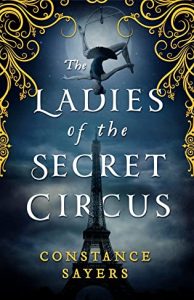 Escape Rating A-: I picked this up because I adored the author’s earlier book,
Escape Rating A-: I picked this up because I adored the author’s earlier book, 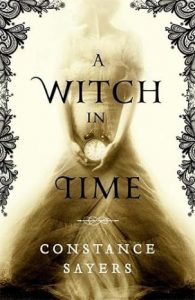 Christopher’s story is a story about hunting down clues, investigating theories, and giving over his own life in the present to solve a mystery in the past. Gemma’s story is about learning to make lemons out of lemonade and accepting that even if she can’t go home again, she can make a home where she is.
Christopher’s story is a story about hunting down clues, investigating theories, and giving over his own life in the present to solve a mystery in the past. Gemma’s story is about learning to make lemons out of lemonade and accepting that even if she can’t go home again, she can make a home where she is.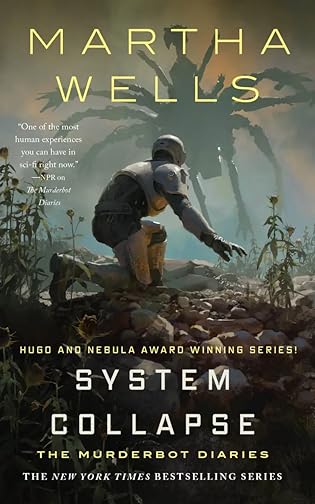 System Collapse (The Murderbot Diaries, #7) by
System Collapse (The Murderbot Diaries, #7) by 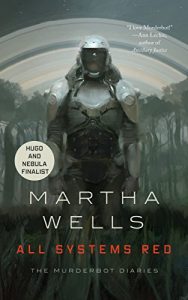 Escape Rating A-: As I’ve said in pretty much every review of an entry in The Murderbot Diaries except that
Escape Rating A-: As I’ve said in pretty much every review of an entry in The Murderbot Diaries except that 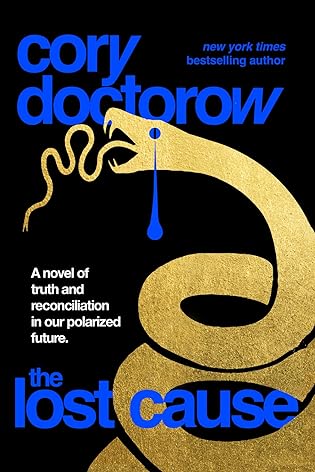 The Lost Cause by
The Lost Cause by